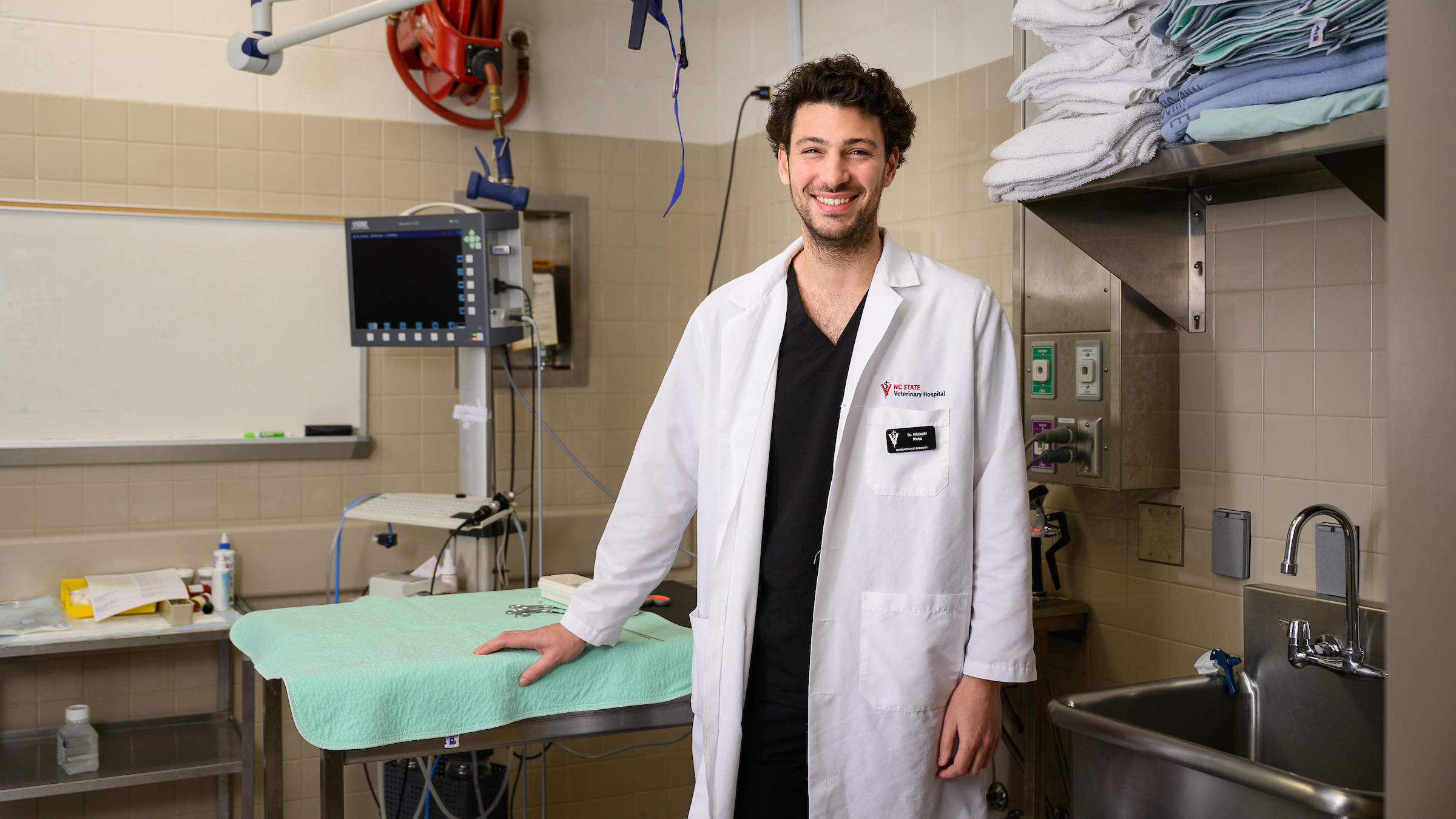Plasmapheresis a Potentially Life-saving Approach to Veterinary Immunotherapy
The power of plasmapheresis lies in its unequivocal speed.
For some canine diseases, such as the muscle weakness disorder myasthenia gravis, the exchange of plasma can work so quickly and so effectively that a dog who previously could not walk five steps a few hours before treatment can potentially run long distances on his own a few hours afterwards.
This can be the result after just two plasmapheresis treatment sessions lasting about an hour and a half and typically completed over two days.
This can be the result even in the face of a crisis, when a dog’s condition rapidly deteriorates over mere hours.
“The response can be nearly immediate,” said clinical assistant professor Alessio Vigani, who recently conducted a plasmapheresis therapy session at the NC State Veterinary Hospital. “And after the second session there’s usually a long-lasting response that can be maintained at home.”
Plasmapheresis isn’t just a therapeutic option; it’s a critical intervention. It’s not a cure, but it can save lives.
A relatively new therapy in veterinary medicine, plasmapheresis (also known as therapeutic plasma exchange or TPE) can be used to treat diseases associated with a dysfunctional immune system, known as immune-mediated diseases. It is used almost exclusively after traditional drug therapy, even with increased dosage, proves ineffective.
The NC State Veterinary Hospital is one of just a handful of veterinary medicine institutions in the country that offers plasmapheresis for dogs.
In immune-mediated diseases, the immune system is triggered to attack normal organs or tissues that are perceived as abnormal. This leads to high levels of inflammatory proteins, or immunoglobulins, in plasma.
Selectively removing those destructive proteins is difficult, but taking out plasma in bulk ensures the proteins will be taken out as well. In plasmapheresis, the plasma is then replaced with “clean” plasma usually provided by a donor. Following treatment, drug therapy maintained at home often becomes drastically more effective, said Vigani.
[pullquote color=”orange”]“These dogs go from being extremely weak and only able to walk for very short distances to walking normally very quickly — it’s almost like a miracle.” said Suter [/pullquote]
Vigani partners with Steven Suter, associate professor of medical oncology and director of the VH’s Canine Bone Marrow Transplant Unit, to perform plasmapheresis using the same machine used for bone marrow transplants. Along with myasthenia gravis, other canine diseases that can be treated with plasmapheresis include lupus and immune-mediated hemolytic anemia, which causes the premature destruction of oxygen-carrying red blood cells.

“The most satisfying aspect of using TPE to treat a disease like myasthenia gravis is the response you see in dogs within 12 to 24 hours,” said Suter. “These dogs go from being extremely weak and only able to walk for very short distances to walking normally very quickly — it’s almost like a miracle.”
Plasmapheresis has long proven effective in treating humans who suffer from myasthenia gravis, but it is also used to treat a variety of immune-mediated diseases in people, including multiple sclerosis. Modern plasmapheresis treatment for humans was developed in the 1960s. Vigani said multiple veterinary medicine studies have shown plasmapheresis to be just as beneficial in treating similar diseases in dogs.
“On the human side, it has become so effective that, for some diseases, doctors don’t even start with drug therapy,” said Vigani. “They start with plasmapheresis because the outcome will be much better for their patients. The hospitalization will be much shorter. They often feel better right away.”
Sharing a strong interest in extracorporeal (outside the body) therapy in companion animals, Vigani and Suter hope to build the nation’s first all-inclusive extracorporeal therapy unit at the NC State Veterinary Hospital, covering a spectrum of interventions. Currently plasmapheresis isn’t an official part of a specialty department at the veterinary hospital. In a recent case, the neurology service consulted with Vigani and Suter on whether a patient would benefit from plasmapheresis.
For immune-mediated diseases in veterinary medicine, drug therapy is the traditional first line of defense —and it often proves effective. But when it does not, a plasmapheresis team could immediately partner with other hospital services to provide thorough care.
“This procedure can help these dogs tremendously while we wait for some other medications we use to take effect,” said Suter. “The procedure can be absolutely life-saving upfront.”
[pullquote color=”orange”]“It represents, in many cases, the last resort,” said Vigani. “But at the same time it could become the first line of therapy to optimize care for these diseases.” [/pullquote]
Vigani, who also heads the hospital’s dialysis service, is a particularly passionate plasmapheresis advocate. Before coming to the NC State College of Veterinary Medicine three years ago, he managed about 20 cases using plasmapheresis while as a resident at the University of Florida.
To Vigani, the benefits of plasmapheresis are far-ranging. It provides another treatment option for clients, showcases an advancement in medical care the hospital can regularly provide and creates an opportunity for a team approach in treating diseases.
He and Suter urge local veterinarians and clients to reach out to them to see if plasmapheresis could be an effective treatment option (consultations are free). The two hope to begin seeing more plasmapheresis cases — and swift results — much more frequently.
“It represents, in many cases, the last resort,” said Vigani. “But at the same time it could become the first line of therapy to optimize care for these diseases.”
For more information on plasmapheresis at the NC State Veterinary Hospital, call the medical oncology service at 919-513-6690 or the emergency service at 919-513-6911.
~Jordan Bartel/NC State Veterinary Medicine
- Categories:


